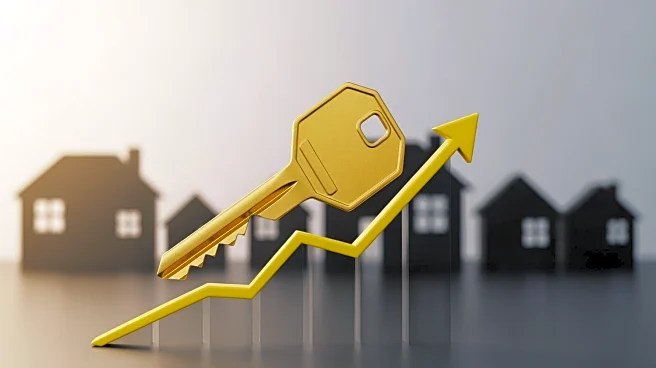What's Happening?
In New Hanover County, North Carolina, the median sales price for homes increased by 5.1% in August, reaching $462,500, compared to $440,000 in July. This rise is part of a broader trend where single-family homes saw a 2.2% increase in median selling
price, reaching $475,000. However, the number of recorded sales in the county dropped by 3.3% from August 2024, totaling 387 transactions. Across North Carolina, the median sales price for homes slightly increased to $360,000 in August, up from $357,746 in July. Despite this, the total value of residential home sales in the state decreased by 15%, from $8.8 billion in July to $7.5 billion in August.
Why It's Important?
The increase in home prices in New Hanover County reflects a localized trend that contrasts with the overall decline in sales volume across North Carolina. This suggests a potential shift in market dynamics where demand in certain areas remains strong despite broader economic pressures. The decrease in total sales value statewide indicates potential challenges in the housing market, possibly influenced by economic factors such as interest rates or consumer confidence. Stakeholders, including real estate investors and local governments, may need to adjust strategies to address these changing conditions.
What's Next?
As the housing market continues to evolve, stakeholders will likely monitor economic indicators and policy changes that could impact future sales and pricing trends. Real estate professionals may focus on marketing strategies to attract buyers in areas experiencing price increases, while policymakers might consider measures to stabilize the market and support affordability. The ongoing analysis of sales data will be crucial in understanding the long-term implications for the housing sector in North Carolina.
Beyond the Headlines
The disparity between rising home prices in specific counties and declining sales statewide may highlight underlying economic inequalities or demographic shifts. This could lead to discussions on housing affordability and access, particularly in regions experiencing significant price increases. Long-term, these trends might influence urban planning and development strategies, as well as community investment priorities.













